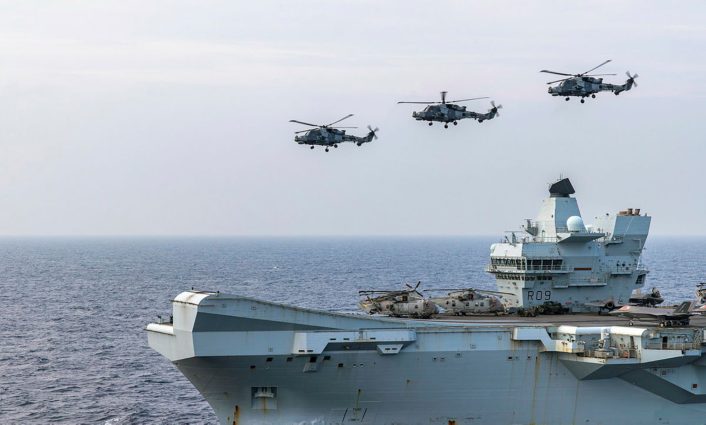The Royal Navy is becoming more lethal as September brings new developments in the deployment of two of its vital anti-ship missiles.
The Sea Venom light anti-ship missile, carried by the Wildcat HMA2, and the ship-borne heavy anti-ship Naval Strike Missile (NSM) are hitting major milestones as the Royal Navy seeks to become more lethal in the anti-shipping role. For the last few years, the Royal Navy has been reliant on its submarine capability to take on hostile warships.
The causes were the combined problems of equipment leaving service and slow development and integration timelines of their replacements. Now, however, the Royal Navy seems to be turning a corner as its surface fleet regains the ability to take on hostile surface warships independently.
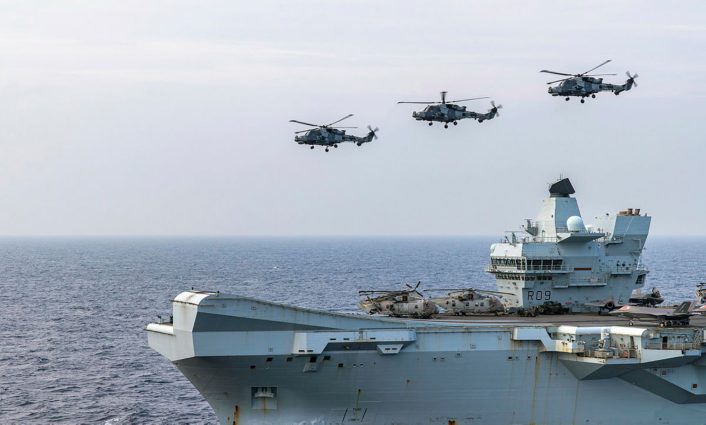
Sea Venom IOC
On Sept. 7, 2025, Wildcat HMA2 demonstrated that it is now capable of deploying Sea Venom missiles on operations as initial operating capability (IOC) has finally been achieved. The weapon has been carried on operations before, such as during the 2021 Carrier Strike Group (CSG), where a pre-IOC variant of the missile was deployed.
However, this was only as a weapon of last resort, owing to a lack of proper integration between the missile and the aircraft. With this resolved, Operation Highmast marks the first time Sea Venom has been deployed ready to be used in combat.
There’s venom in the Wildcat’s bite…
A significant milestone towards arming #RoyalNavy maritime attack helicopters with ship-busting missiles has been achieved during #CSG25.
Read more: https://t.co/vZ78VyuWlQ pic.twitter.com/Vu64f9htzU
— Royal Navy (@RoyalNavy) October 2, 2025
The demonstration of IOC was made during the Royal Navy’s current CSG mission to the Indian and Pacific Oceans. In total, four Wildcats have been deployed, with two operating from the aircraft carrier HMS Prince of Wales, another from Type-45 destroyer HMS Dauntless and the fourth flying from HNoMS Roald Amundsen, a Fridtjof Nansen-class frigate of the Royal Norwegian Navy.
The deployment of a Royal Navy Wildcat to the Norwegian vessel highlights the close integration between the two forces. This will further develop as the Royal Norwegian Navy equips itself with British made Type-26 anti-submarine frigates, which will enter service in the next few years.
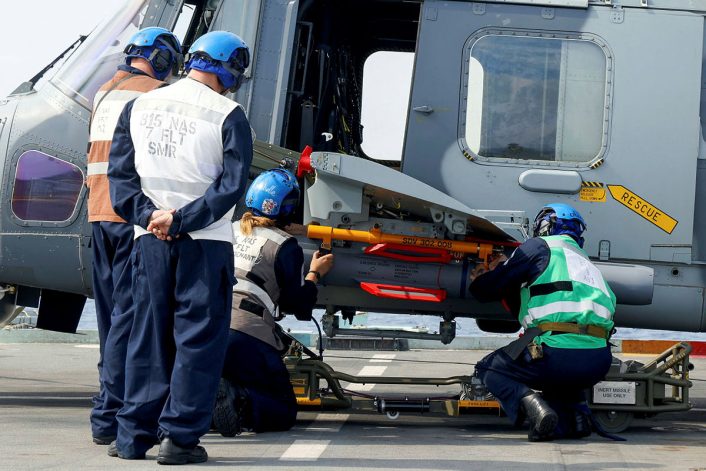
Three of these Wildcats took off from HMS Prince of Wales carrying a single Sea Venom each to demonstrate the achievement of the missile’s latest milestone. Sea Venom was originally slated to enter service in 2023, but this has been met by considerable delays over the preceding years.
The delays were possibly in part due to France leaving the program a few years ago, leaving only the British portion of MBDA missile systems to carry on its development.
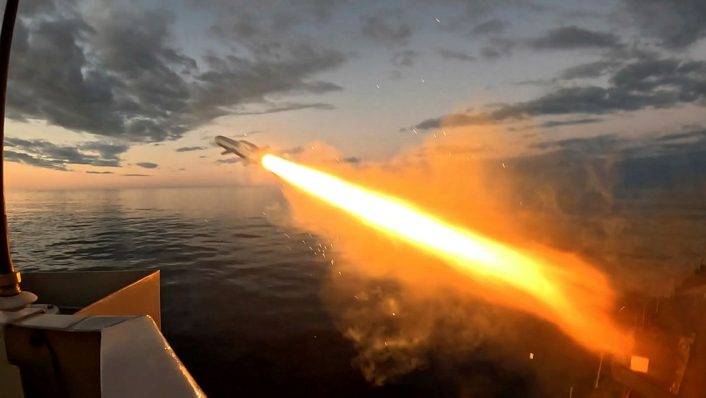
NSM Test Fire
Additionally, on Sept. 19, HMS Somerset, a Type-23 Duke class frigate, test fired the Naval Strike Missile (NSM) for the first time, helping the Royal Navy to recover its surfaced launched anti-ship capability that was lost when the Harpoon missile left service. The test was carried out alongside the Norwegian and Polish militaries, who launched their own NSMs from ground launchers situated on Norway’s coast.
The target was the ex-HNoMS Trondheim, an Oslo-class frigate of the Norwegian Navy that had been decommissioned in 2006. The ship was struck by NSMs from the three militaries testing their potence, before it was finished off by a torpedo launched from a Norwegian submarine hidden beneath the waves.
ex-🇳🇴HNoMS Trondheim was the target struck by Naval Strike Missiles fired by @HMSSomerset, HNoMS Thor Heyerdahl, HNoMS Steil and a land-based launcher during Exercise Aegir 25 in early September.
Via @Sjoforsvaret pic.twitter.com/3VRxkFmkEl
— Navy Lookout (@NavyLookout) October 2, 2025
This test has been a long time coming with HMS Somerset first fitted with NSM in 2023, just a year after its original purchase. For currently unknown reasons, the missile test seemingly took around 18 months to arrange, delaying the missiles proper entry into service.
Known as the Maritime Offensive Strike System (MOSS) in the Royal Navy, the NSM is planned to be fitted to most of the still in service Type-23 frigates and full fleet of Type-45 destroyers. The weapon will be eventually replaced by MBDA’s newly unveiled Stratus anti-ship/future cruise missile, sometime in the 2030s.
Sea Venom
Designed by MBDA missile systems, Sea Venom was originally an Anglo-French weapon, before the French dropped out of the program in the 2020s. It was originally designed to replace the Sea Skua missile, carried by the Lynx helicopter in Royal Navy service.
The weapon features several improvements, such as a lighter weight, longer range of 20 km and the ability to be used in a fire and forget mode, giving the launching helicopter time to escape return fire.
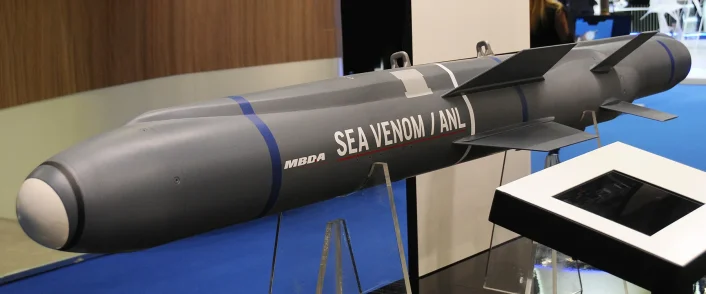
The missile’s payload is relatively small, around 30kg, making it primarily designed for destroying targets up to the size of a corvette. However, its accuracy allows an operator to destroy key components on board larger warships, such as fire control radars or the bridge, which can result in a mission kill depending on the scenario.
Sea Venom fills an important niche, allowing the Royal Navy to defend itself from multiple swarming missile boats such as those used by the Iranian Navy. To this end, up to four can be carried at once on the Wildcat HMA2. The combination of the two is extremely potent as it gives Royal Navy surface ships the ability to neutralise a fleet of missile boats whilst staying out if their range, using the stand-off distance of the missile and the helicopter together.
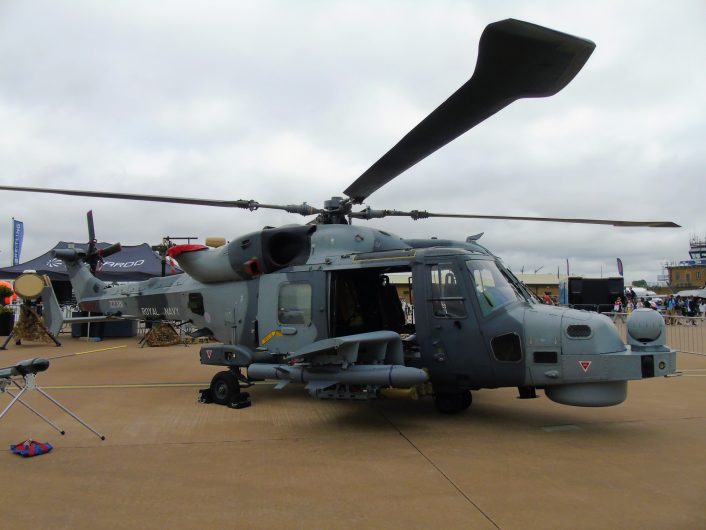
This type of battle occurred during the 1991 Gulf War at the Battle of the Bubiyan Channel, where Royal Navy Lynx helicopters destroyed 14 Iraqi vessels using the Sea Skua missile. The Wildcat and the Sea Venom share this lineage, filling the same role in future engagements.
Sea Venom offers operator-in-the-loop capability so that the missile can be directed mid-flight, whether this be for final aim point adjustment, aborting an attack, or for standard re-targeting during combat. This offers the Royal Navy a capability beyond standard fire and forget missiles, giving aircrew more control over the targeting of their weapon system through the provision of live camera feeds directly to the cockpit. Yet, the missile can still be operated in a fire and forget mode where it utilises an on board infra-red seeker for targeting.
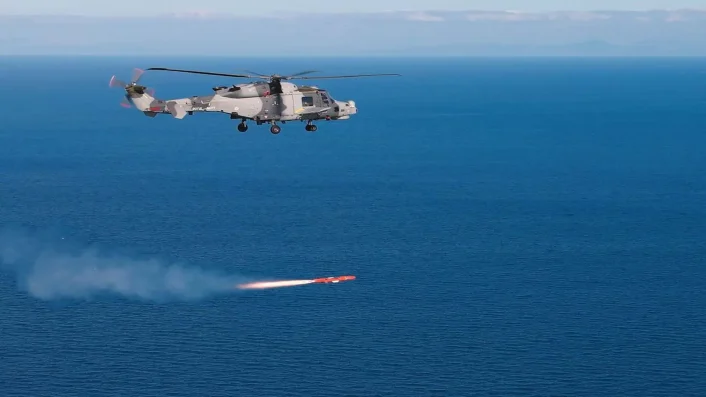
The Sea Venom completed a live fire test in 2024, where a single missile was launched against a static target made of shipping containers. More can be learned about the test launch in our previous report here at The Aviationist.
This test marked an important milestone for the missile, after years of delays up to that point. Now, with IOC achieved, Sea Venom will be deployed more and more over the 28-strong fleet of Royal Navy Wildcats.
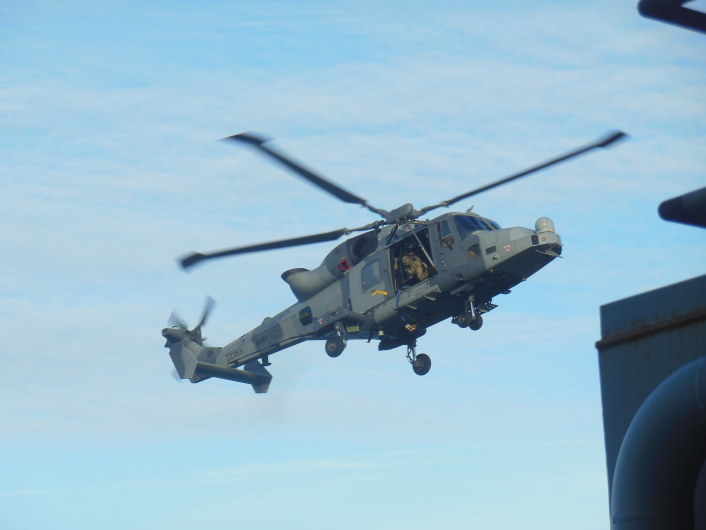
Naval Strike Missile
Designed by Kongsberg Defence & Aerospace, the NSM has a 120kg warhead that is about half the one used by the Harpoon missile that NSM seeks to replace. However, its stealthy design, including the use of entirely passive guidance systems, allows the NSM to get through to its target without being detected or intercepted.
The missile does not use radar for guidance, meaning that the likelihood of a hostile detecting the oncoming missile is reduced. As a result, this maximises the destructive potential of the missile as an opponent is less likely to see it coming, and so they are also less likely to activate defensive measures.
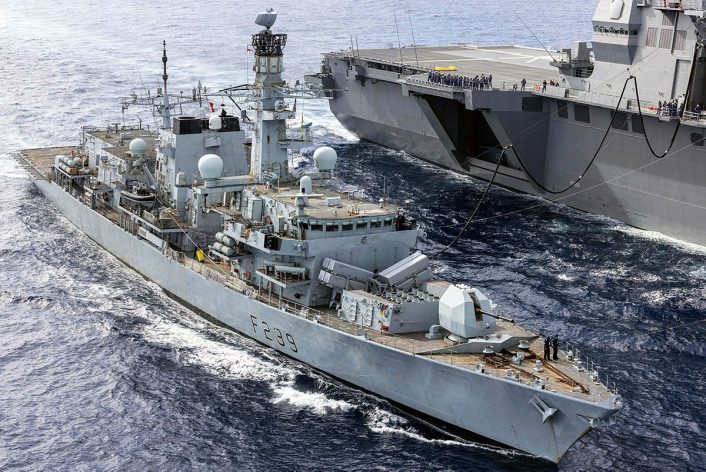
Combined with its sea skimming capability, the NSM is a very potent missile, explaining its widespread adoption amongst the world’s navies and air forces.
Initially selected in 2022 after the start of Russia’s invasion of Ukraine laid bare the Royal Navy’s lack of anti-surface weaponry, the NSM was selected by then Defence Secretary Ben Wallace to fill the Interim Surface-to-Surface Guided Weapon program.
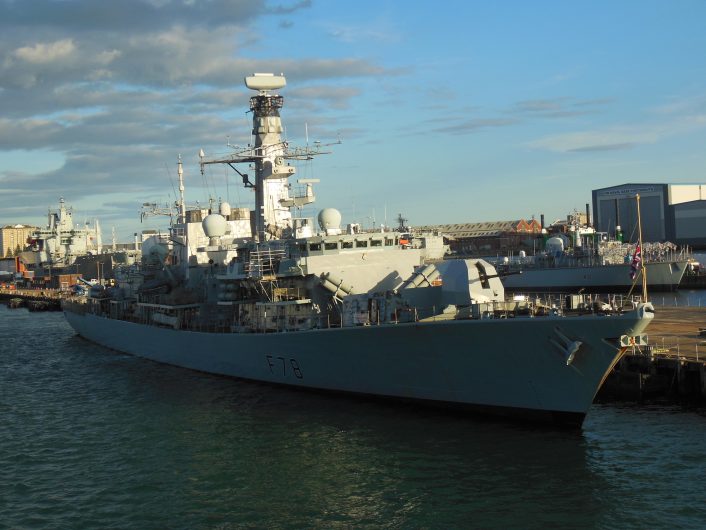
The classic Harpoon missile was by that point nearing the end of its usable life, with the last test launch conducted by Type-23 frigate HMS Westminster in 2022. The missile was officially retired in 2023, although HMS Lancaster continued to carry them for some time after due to its deployment to the Gulf region.
💥 Watch @HMSSomerset launching the Naval Strike Missile – the first @RoyalNavy firing of the new ship-busting missiles, capable of targeting and destroying enemy vessels from over 100 miles away. pic.twitter.com/dj7ApKLEhm
— HMNB Devonport (@HMNBDevonport) September 29, 2025
NSM was meant to be adopted ‘at pace’ and rapidly fitted to Royal Navy warships to replace Harpoon but full adoption has been slow. However, the latest test marks a significant moment for the Royal Navy as it shows that it is once again able to engage enemy warships.
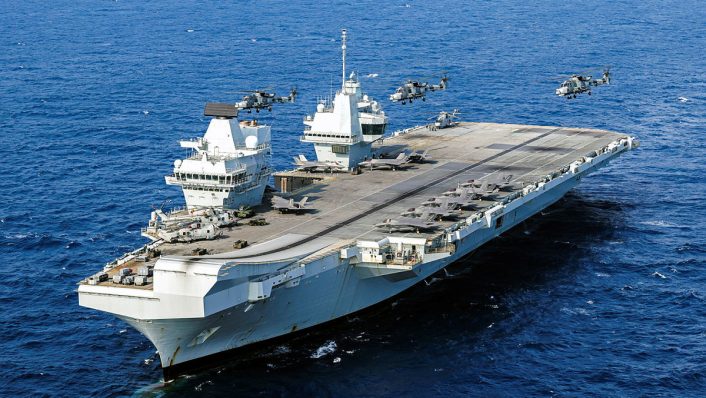
NSMs have a number of variants, with 200km and 300km versions extending the range at which the Royal Navy can fight. Once deployed across the fleet, NSMs will nicely complement the shorter ranged Sea Venom, giving the Navy the teeth it needs to fight and win.


